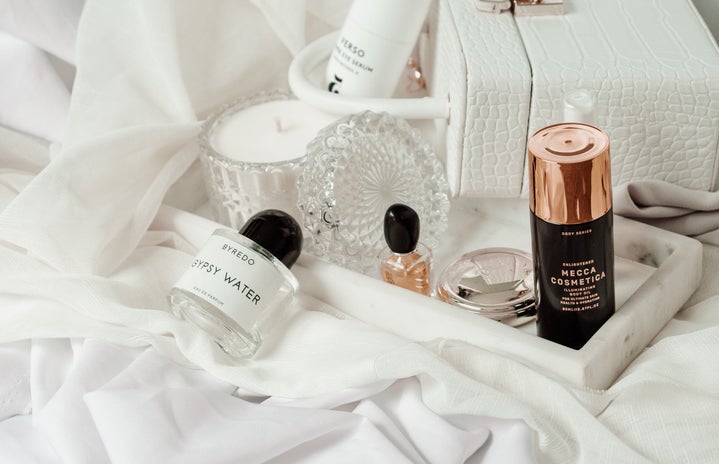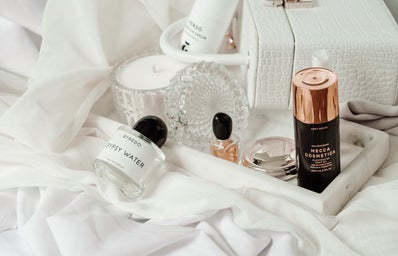It’s been awhile since I’ve had this many conflicted feelings after seeing a film. When people ask me if I liked Beauty and the Beast, I can’t give them a straight answer because it feels wrong to write off a Disney movie, particularly one starring Emma Watson. But whether or not you liked the film or knew you’d like it as soon as you saw the trailer, there’s a lot to unpack that fits into the larger trend of the reboot era. For those who haven’t seen the film yet, be aware that this review goes in depth, though I’ve labeled the most significant plot-related spoilers!
The complexity of the remake and a missed opportunity
Beauty and the Beast is composed of a mix of improvements to the original, avoidable issues, and the inevitable pitfalls one may expect from a reboot. For its faults, the film does have redeeming qualities where the creators’ intentions really shine through. One such feature is the addition of Belle’s backstory and how her mother’s passing defined her and her father’s relationship. [MODERATE SPOILERS] Belle’s father Maurice took Belle and left Paris as his wife was dying of the plague. Maurice raised Belle in the spirit of her mother, who also defied convention. Belle and the Beast are transported to this scene together using the Beast’s enchanted map a.k.a Disney’s version of a Pensieve. [END OF SPOILERS] By contrast, later there is a brief and awkward depiction of the young prince singing over his mother on her deathbed before he’s pulled away by his father, who is described to have been self-centered and cruel. But Belle doesn’t see this, only the audience does—another instance where information is held from her. Drawing a stronger comparison between the tragedy of their early lives could have aided the case for Belle’s attraction to the Beast to the more reluctant part of the audience, but the moment was glossed over.
Lackluster sound design and awkward editing
Sound mixing and editing are weaknesses in the film that I didn’t expect. The average scene sounds sterile, just layering the character’s voice, the music, and a stray sound here or there. Most of the film consistently falls short of the number of sounds that should otherwise fill the town square, or the forest, and nearly every other scene in the film. Additionally, the editing of shots impaired the pacing and made some moments unnecessarily out of place. What sticks out to me the most is the recreation of the iconic snowball fight in the “Something There” sequence. Belle playfully hits the Beast with a snowball and he retaliates by throwing a huge snowball at her face, knocking her on her back, and it cuts quickly to a shot of the Beast smiling and again quickly to the next shot. It’s supposed to be funny, one of many brief jokes in the film, but isn’t timed well.
Visually gorgeous, though some CGI weirdness
To throw in some positives about the film, Emma Watson is a fitting Belle. Beautiful, expressive, elegant, and awkward at times, she successfully brings one of the best Disney princesses to life. It’s no wonder that the disconcertingly CGI Beast (Dan Stevens) can relearn to be human through her. While in character the Beast is actually a close rendition of the animated Beast, he is in my opinion too visually unrealistic, much like the exterior of the castle. Although the graphics and editing fall short, the costuming and some of the production design of Beauty and the Beast are stunning. The simplistic colors and designs of the animated film cannot contend with the complexity and vibrancy of the live-action world. Belle’s yellow-gold gown, Maurice’s music box, and the ballroom were the most impressive embellishments to the film. Contrastly, the town almost intentionally looked like a movie set rather than a place that could have existed.
Unimpressive signing, but “Gaston” is great
One of the first criticisms I had was of the opening song “Belle,” in which Watson’s voice was auto-tuned so poorly I thought I was in 2009. The jarring artificiality of her voice made it all the more obvious in other songs when the voices jumped from note to note in a way that reminded me I was watching a movie, not a musical. Compared to Frozen and Moana, the singing itself lacks magic. Lyrically, though, all of the songs are captivating and great for listening to on repeat. My favorite song was “Gaston” for its high energy and relatively few issues with pacing. It made me realize Gaston (Luke Evans) is surprisingly hot in this film whereas in the cartoon his masculinity is hyperbolic and easier to mock. Here, it’s much closer to the flippant dominance of many men in real life.
Lefou and LGBTQ representation in kids movies
In the original film, Gaston’s Peter Pettigrew-esque sidekick Lefou (in French, the fool) is pitiful, unlikable, comic relief, and coded as gay. Disney has a long history of portraying villains and antagonists as effeminate in mannerisms, voice, and dress. Examples of this in the video above include Jafar from Aladdin, King Candy from Wreck-It Ralph, and Scar from The Lion King. Masculinity, as a construct, isn’t celebrated to the same degree in Beauty and the Beast as it is in other princess films. Most notably, Gaston, a hyper-masculine misogynist, is punished for his behavior and problematic ideology. Despite the subversion of expectations in gender roles, sexual orientation isn’t given the same treatment. [SPOILER] We can only assume Lefou gets a happy ending after he dances with another man in the prince’s castle. [END OF SPOILER] Following their return to life, the likeable heterosexual couples of the castle are allowed to kiss each other—the happy ending for Lefou is only implied based on the audience’s opinion of what is possible in the film’s world.
I’m obviously disgusted with the backlash to generally having a gay character in a Disney or “kids” film, but that doesn’t excuse the film from critique about how Lefou’s sexuality is presented. It wasn’t a wise move on the filmmakers part to simply revise Lefou’s character for a modern, more tolerant audience while still using him as the primary comic relief. There were moments when I began to laugh at Lefou’s jokes or gestures, then stopped as I thought of audience members who have hardly seen LGBT characters in film or television and who would find the allusions to his sexuality funny for different reasons. This is why Disney has to make a feature film headed by a partly- or majority-LGBT creative team with an explicitly queer protagonist soon instead of slowly testing the waters; it is insufficient to simply rewrite insignificant or antagonistic characters.
The Franchise Era
The artificiality of Beauty and the Beast and its strict adherence to the original Disney story needed a more significant change to set it apart and make the film seem more purposeful. My first idea was to have scrapped the cliche narration at the beginning of the film with parallel moments from Belle and the young prince’s childhoods, sort of like the beginning of Frozen, sans singing. A potential problem with that choice is that then the audience would already have faith in the Beast’s ability to change. However, the audience already knows more than Belle about the Beast’s past and knows what will happen in the end, so something to that effect could have worked.
Nerdwriter1 is one of my favorite YouTubers, and this has to be one of my favorite YouTube videos of all time, released just after the Beauty and the Beast teaser trailer was released last May. He puts to words part of the reason why you may feel unsatisfied after reboots: a phenomenon he calls “weaponized intertextuality.” In other words, it’s when a spin-off or reboot relies on familiar visual and audio cues over good storytelling and film technique. Essentially, fanservice. This is why the trailers for the film were so compelling compared to the film itself: the format allows for a barrage of nostalgic cues without revealing the shortcomings of the narrative flow.
As Disney continues to repackage their old films, they forget the major reinventing each fairy tale went through over time and in its first Disney adaptation. When it comes to reboots, not every film can transform in tone and plot like Maleficent for princess films or the Batman trilogy for superhero films. Still, these hyper-polished live-action reincarnations must have some of the spirit of the predecessors. Tweaking the story to sell tickets is not enough.
If you would like to write for Her Campus Mount Holyoke, or if you have any questions or comments for us, please email mt-holyoke@hercampus.com.


